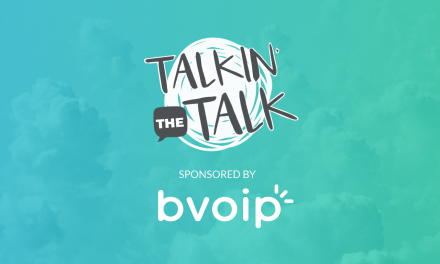When it comes to opportunity costs, they can sometimes be difficult to “budget” for. This is because in a logical sense, the more you spend, the more you would make. Therefore limiting this spend is essentially just hindering growth. On the contrary, the reason most MSPs struggle to determine a budget is actually because they feel like their marketing isn’t working and thus they no longer see this as a cost of opportunity. At this point, their budgeting is simply trying to hedge their bet because they ultimately expect little in return.
I have tackled this subject before, both in my book and on this very site, but I thought it would worth revisiting. This is because there are numerous factors that go into this decision and this time around I would like to take a higher view of them. Picking a number based on what you can afford to lose is a very “defensive” approach. I prefer to take a more “offensive” approach, where I figure out what I want to sell, set a goal for how many customers I want to acquire, and then figure out the minimum amount I should spend in order to reach that goal.
Here is the process that I go through when trying to determine both the minimum and maximum amount that an MSP should spend on marketing on a monthly or annual basis.
What Is Your Ideal Service Offering
There is a saying “dress for the job you want, not the one you have.” Even though every day is casual Friday here in my home office, this quote still rings true to me in a metaphorical sense. We should always be making decisions based on the deals that we want, not necessarily the ones that we already have.
This is why the first step in the process of determining a budget is really to document what your ideal offering would be (such as cost and price per endpoint) and then compare that to what is realistic based on your portfolio of customers. Ideally these would look relatively the same, but more often than not your existing contracts will fall short of future expectations. The important thing is just to ensure that your offering is realistic and your goals are within reason.
The Ultimate Guide To Cash Flow For Managed Services
Sponsored by Alternative Payments & Zest
What Is A Realist Revenue Goal
Now that you know what you are going to offer and at what price, you can now begin to set a realistic revenue goal. This should always be put into terms of your existing MRR and the percentage increase that you hope to achieve. For example, if you are currently doing $100k MRR and would like to increase by 20%, then your goal would be to add $20k in new MRR by the end of the year.
Much like your service offering, you want to find the right balance between optimism and realism when determining this goal. A mature company with stable revenue is not likely to grow MRR by 100% each year, whereas a small company without a large portfolio could achieve with just a few deals. Looking back at year-over-year growth of MRR would help you set a benchmark for what can be achieved and help determine a new revenue goal moving forward. This is a critical step as it is almost impossible to set a real marketing budget without some kind of goal in place to work toward.
Does Your Target Fit Your Goal
The next piece of the puzzle is to determine what type of customers you should acquire to reach your goal and whether or not that is realistic based on your market. For example, adding $50k MRR at $100 MRR per endpoint would equate to you adding 500 endpoint under-management over this time period. If your target customer is a Law Firm with an average of 25 employees, then you essentially need to acquire 20 Law Firms to achieve this goal.
This is where I often see missteps in the process, as companies will set a random budget and a random target and hope that the two someone align to equal growth. Taking the previous example, acquiring 20 Law Firms would mean that you really have generate interest from substantially more and there simply may not be enough of these particular customer in your service area for you to reach your goal. Only once you are able to create a goal with an achievable target should you move on to start predicting costs.
The Ultimate Guide To Cash Flow For Managed Services
Sponsored by Alternative Payments & Zest
What Is Your Ideal Acquisition Cost
Now that you know the rate at which you want to scale and who you will target, you can start to assess what the long term value of this acquisition will be and then use this to determine what your costs should be. This calculation of LTV is something that I covered in my book and can also be referenced via this blog post for those who need a refresher. This will help you determine the minimum amount you should ideally spend in order to hit your goal. You may spend less and get lucky, but that would not be a recipe for sustainable growth and a way to budget for it.
In an ideal sense, you want your marketing spend to equal roughly 20% of the value of a deal that you generate. For example, if you were to spend $20k to acquire a single customer that would generate $100k in profit over its lifetime, then you made out pretty well. After you have taken your MRR goal and calculated the LTV and target acquisition cost, you now know how much you need to spend over the year to meet your goal. This can now be your “annual budget” that you will use to determine monthly spending.
How Will You Measure Your Success
As you begin spending your allotted budget to reach your revenue goal, you need to have a way to determine your success as soon as possible. There are a million ways that marketing plans break down and so if you are only tracking the “wins” at the bottom of the funnel then you are probably not seeing the big picture and will have a hard time optimizing your spending throughout the process.
This is why when you allocate budget toward a specific campaign, you should know how that campaign is contributing to your overall strategy and then measure success appropriately. For example, if a portion of your budget is spent on content creation, then track how much awareness was generated and what percentage of that total moved through your funnel. In the case of a content strategy, your measure of success would be the size of your opt-in list and/or social following as a barometer for its effectiveness.
My overall sense is that most MSPs do not spend their marketing dollars with this much intent. They may have been approached by a marketing vendor who offers a specific service and the cost of that service then becomes their “budget.” It may work out, it may not, but it was more of a risk assessment than it was a goal-oriented planning exercise. This time around, make 2021 the year that you begin budgeting your marketing spend with a purpose. Whether you succeed or fail at reaching your goal, you will have at least learned enough through your experience to refine your goals and determine a clear path moving forward.

SPONSORED BY ZEST

















